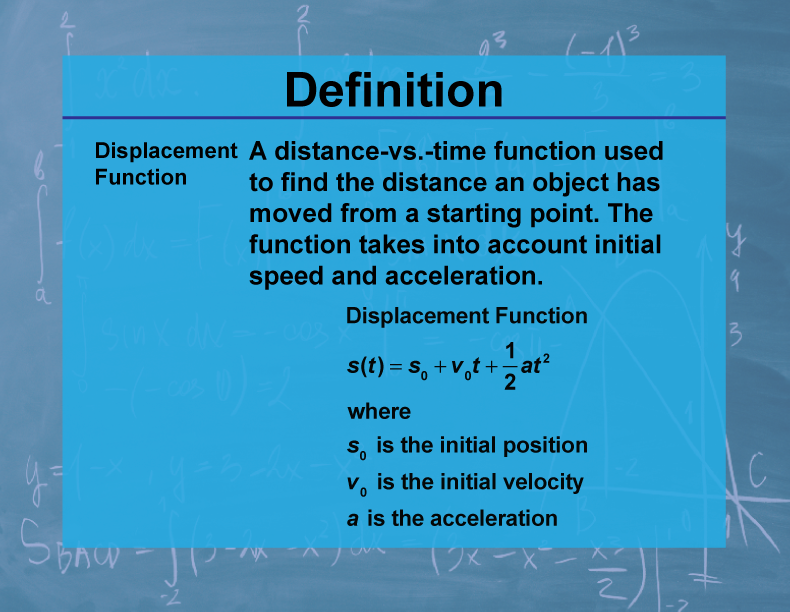
Display Title
Definition--Calculus Topics--Displacement Function
Display Title
Definition--Calculus Topics--Displacement Function

Topic
Calculus
Definition
A displacement function s(t) describes the position of an object relative to its starting point as a function of time t. It represents the object's change in position from its initial location.
Description
The displacement function is a fundamental concept in physics and calculus, particularly in kinematics. It's crucial for analyzing motion, understanding velocity and acceleration, and solving problems involving moving objects. In real-world applications, displacement functions are used in navigation systems, robotics, and in analyzing the motion of everything from subatomic particles to celestial bodies.
In mathematics education, studying displacement functions helps students connect abstract calculus concepts to tangible, real-world phenomena. It provides a concrete context for understanding derivatives (as velocity and acceleration) and integrals (as displacement from velocity). This concept is essential for students pursuing studies in physics, engineering, or any field involving motion analysis.
Teacher's Script: "Let's consider a car driving along a straight road. If its displacement function is s(t) = 2t2 - 5t + 10, where s is in meters and t is in seconds, what can we learn about its motion? By finding s'(t), we get the velocity function. What does s''(t) represent? How can we use this function to determine when the car is moving forward or backward? At what time does the car return to its starting point? These questions illustrate how displacement functions help us analyze motion in detail."
For a complete collection of terms related to Calculus click on this link: Calculus Vocabulary Collection.
| Common Core Standards | CCSS.MATH.CONTENT.HSF.IF.C.7, CCSS.MATH.CONTENT.HSF.BF.A.1.C |
|---|---|
| Grade Range | 11 - 12 |
| Curriculum Nodes |
Algebra • Advanced Topics in Algebra • Calculus Vocabulary |
| Copyright Year | 2023 |
| Keywords | calculus concepts, limits, derivatives, integrals, composite functions |